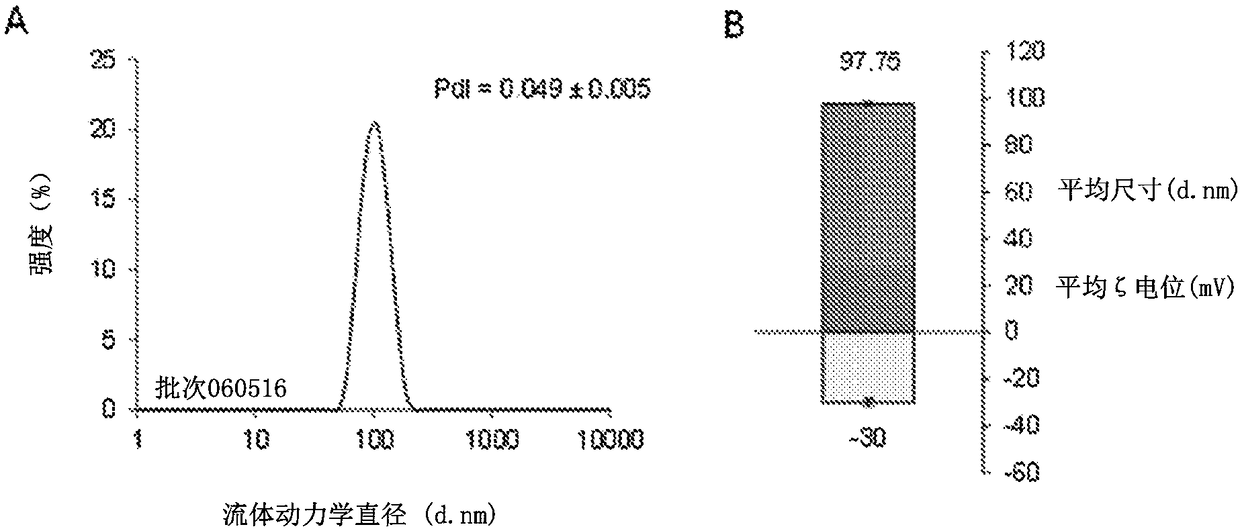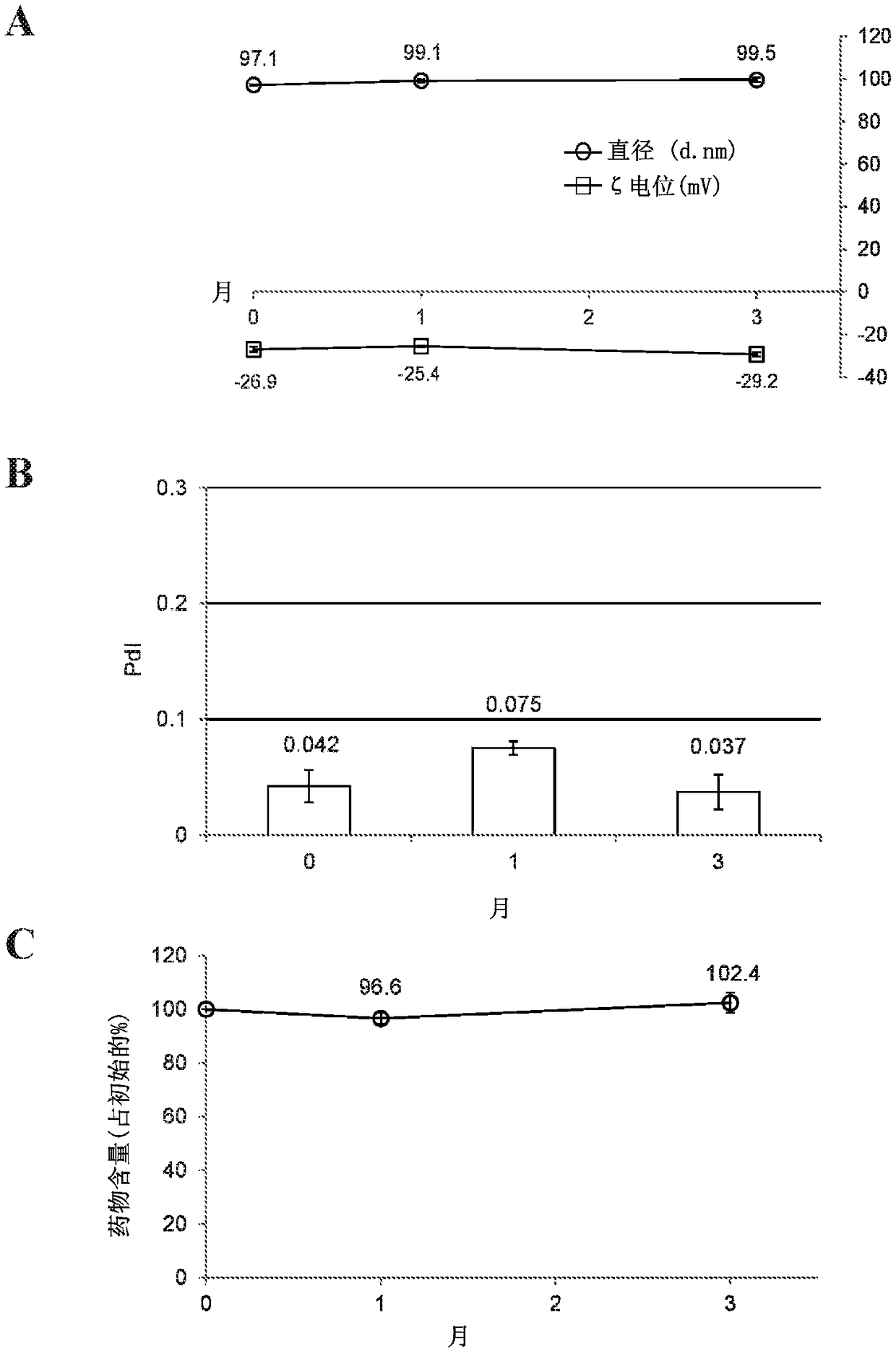Echinomycin formulation, method of making and method of use thereof
A technology of echinomycin and preparation, applied in the field of composition of liposomal echinomycin preparation, can solve the problems of limited clinical application, serious problems and the like
- Summary
- Abstract
- Description
- Claims
- Application Information
AI Technical Summary
Problems solved by technology
Method used
Image
Examples
Embodiment 1
[0171] Example 1. Preparation of liposomal echinomycin formulations. The lipid fraction and echinomycin are weighed out on an analytical balance and dissolved in a suitable solvent such as chloroform / methanol (2:1, v / v) in a glass scintillation vial and vortexed Mix in a vortex mixer. A slow stream of nitrogen was used to evaporate the organic solvent and create a uniform lipid film on the walls of the glass vial. To prevent gelation, the drying process was carried out at 65°C. By adding double distilled water (ddH 2 10% sucrose (w / v) in O) hydrated the lipid membrane so that the final concentration of total lipid was 7.1 mg / mL. The hydrated mixture was kept above 65°C and vortexed vigorously until all membranes were dissolved. A hydrated solution of large multilamellar vesicles (LMVs) was rapidly extruded in 1 mL increments through 200 nm, 100 nm, and 50 nm stacked polycarbonate (PC) filters using an AvantiMini-Extruder until lipids in the combined post-extrusion mixture ...
Embodiment 2
[0176] Example 2. Size distribution and physical characterization of liposomal echinomycins. Liposomal echinomycin formulations were characterized using Malvern Zetasizer software to determine mean size and zeta potential. like figure 1 As shown in the representative dynamic light scattering (DLS) curve in Figure A, the size distribution was found to be consistently within a very narrow range with a polydispersity index of less than 0.1. Enhanced penetration and retention rate (EPR) and maximal immunoinvasiveness of pegylated sphingoliposomes due to rapid uptake by the reticuloendothelial system (RES) have been reported for liposomes with liposome size figure 1 , Figure B).
[0177] Measuring the zeta potential of liposome formulations can provide a reliable method for predicting particle stability and aggregation tendency. The average zeta potential of liposomal echinomycin was found to be about -30 mV, which indicates that the product is stable and less likely to aggregate...
Embodiment 3
[0180]Example 3. In vitro release of echinomycin from echinomycin liposomes. Evaluation of liposomal echinomycin in vitro drug release was performed by dialysis by measuring the release rate of echinomycin by HPLC at each time point in water at room temperature over a period of 240 hours. Echinomycin concentrations were calculated at each time point according to the echinomycin standard curve. Percent release was extrapolated as a function of the initial echinomycin concentration detected in the liposomal echinomycin sample prior to initiation of dialysis. The in vitro release characteristics of liposomes are summarized in e.g. figure 2 The cumulative release percentages shown in Panel A. exist figure 2 Representative HPLC chromatograms showing echinomycin peaks at corresponding time points are depicted in panel B.
PUM
| Property | Measurement | Unit |
|---|---|---|
| diameter | aaaaa | aaaaa |
| molecular weight | aaaaa | aaaaa |
| diameter | aaaaa | aaaaa |
Abstract
Description
Claims
Application Information
 Login to View More
Login to View More - R&D
- Intellectual Property
- Life Sciences
- Materials
- Tech Scout
- Unparalleled Data Quality
- Higher Quality Content
- 60% Fewer Hallucinations
Browse by: Latest US Patents, China's latest patents, Technical Efficacy Thesaurus, Application Domain, Technology Topic, Popular Technical Reports.
© 2025 PatSnap. All rights reserved.Legal|Privacy policy|Modern Slavery Act Transparency Statement|Sitemap|About US| Contact US: help@patsnap.com



